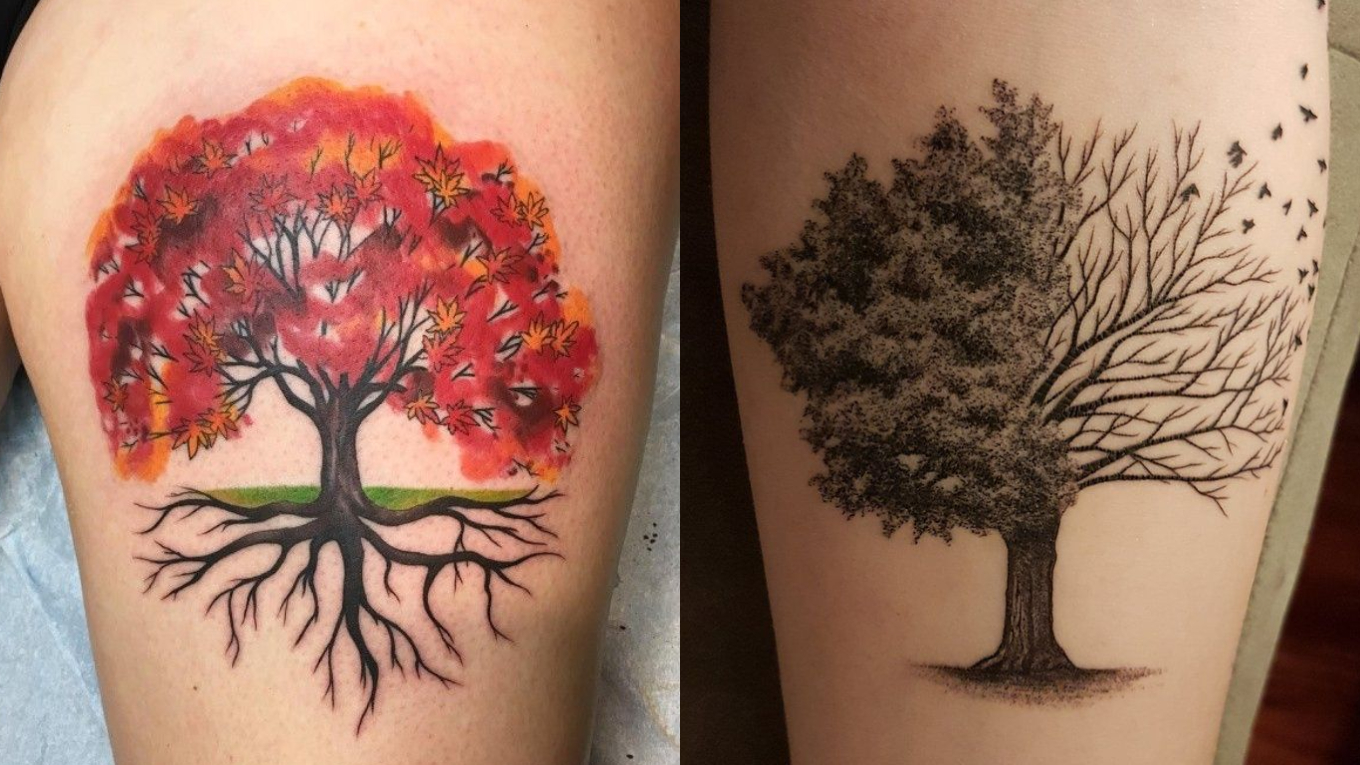The most famous beetles in the UK are probably ladybirds. But did you know that there are over 4,000 beetle species to spot here?
Plenty are easy to identify. Read on to discover 17 of the most colourful and striking British beetles including a particularly vibrant ladybird.

Urban areas, even cities, have more beetles than you’d think. ‘There are more than 2,000 species of beetles known from the London area,’ says Max Barclay, Senior Curator in Charge of the Museum’s beetle collection.
‘London is even a stronghold for the rare greater stag beetle, the largest beetle in Britain. It is a truly impressive insect, which looks like it is from the tropics.
‘Wherever there are green spaces – such as graveyards, parks and gardens – lots of different beetles can be found.’..

1. Rose chafer (Cetonia aurata)
Rose chafer on blossom
The rose chafer is iridescent golden-green and around 20mm long © Chrumps (CC BY-SA 3.0) via Wikimedia Commons
The rose chafer beetle flies noisily from flower to flower on warm summer days. Its larvae live on decaying plant material like compost and rotting wood.
This jewel-like beetle is found from the Midlands down through southern Britain and is now common in London’s outer suburbs.
Max says, ‘The rose chafer is a large and beautiful beetle that people are likely to notice.
‘It became very rare 100 years ago and has only recently become common again. You can see it in places like Wimbledon Common and Brompton Cemetery in London, and even on flowering trees in gardens and along streets.
‘It is becoming much more common in urban areas all over the south of Britain.’

2. Rosemary beetle (Chrysolina americana)
Rosemary beetle on lavendar
Rosemary beetles are metallic green with purple stripes. They are about 8mm long. © Lisa Hendry
Between May and October you can see this beetle on rosemary and other aromatic plants such as lavender, sage and thyme.
The rosemary beetle was first spotted in the UK in London in 1994 and quickly spread through much of the UK.
Native to southern Europe, the species probably arrived here on an imported rosemary plant. Some gardeners consider it a pest as the larvae and adults nibble a bit off rosemary or lavender leaves, but others appreciate it as a beautiful addition to their gardens.

3. Rainbow leaf beetle (Chrysolina cerealis)
A rainbow leaf beetle with its wing casings open, about it take flight
The rainbow leaf beetle has metallic bands of green, blue, gold and red. It is about 8mm long. © Gabriele Wahl/ Shutterstock.com
Even more colourful is the rainbow leaf beetle, which lives on Welsh mountainsides. Very rare in the UK, it is now found only on Mount Snowdon. The beetles’ larvae feed on the flowers and leaves of wild thyme that grow there. It is one of the few UK beetle species that has legal protection.

4. Twenty-two-spot ladybird (Psyllobora vigintiduopunctata)
A white variant of the 22-spot ladybird mating with a yellow one, both have 22 black spots
The 22-spot ladybird is lemon yellow with 22 black spots that don’t merge. It is about 4mm long. © Gilles San Martin (CC BY-SA 2.0) via Flickr
There are around 50 species of ladybird in the UK and only three are yellow, including the 22-spot ladybird. It feeds on mildew on plants. This is unusual for ladybirds, as most munch on aphids and other tiny pests that feed on garden plants such as roses.
From April to August you can see this beetle in woods, grassland and urban settings such as towns and gardens. They are common in England and Wales.
There are two colour varieties – one has an entirely yellow background, the other is white at the front.

5. Wasp beetle (Clytus arietis)..
Wasp beetle on a buttercup
The wasp beetle is black and yellow like its namesake, and up to 16mm long © gailhampshire (CC BY 2.0) via Flickr
This longhorn beetle looks and moves like a wasp darting around on logs and flowers. It is harmless though and mimics the common wasp to protect itself from predators.
Adult wasp beetles are excellent pollinators and can be seen from May to July on flowers in woods and hedgerows.
The larvae live in dry, dead wood such as willow and birch.
This beetle is widespread in England and Wales, but scarcer in Scotland.

6. Green tiger beetle (Cicindela campestris)
Green tiger beetle on rough, bare ground
The green tiger beetle is a shiny green colour with creamy-yellow spots and bronze-purple legs. Adults are 10-15mm long. © Lairich Rig (CC BY-SA 2.0) via geograph
The green tiger beetle is one of the fastest running insects in the UK. Some tiger beetles are known to reach speeds of nine kilometres per hour.
The ‘tiger’ in this beetle’s name refers to its powerful jaws or mandibles, which it uses to catch small invertebrates.
The larvae have them too, clamping them shut on any passing prey that strays too close to their burrow.
Common throughout Britain and Ireland, green tiger beetles prefer areas of sparse vegetation, living in heathland, grassland, brownfield sites and dunes.

7. Stag beetle (Lucanus cervus)
Stag beetle with large antlers
The stag beetle is black with impressive antlers, which are actually its jaws. Adults can reach 7.5cm in length. ©
Simon A Eugster (CC BY 3.0) via Wikimedia Commons
Also called the greater stag beetle, this is the UK’s largest beetle. It is rare and found only in certain areas of southern Britain.
Stag beetle larvae spend four to six years feeding on rotting tree stumps and other decaying wood that is in contact with the ground, which is why it is so important to leave fallen timber and stumps.
‘This beetle is rare and threatened throughout northern Europe, and the populations in the Thames Valley are some of the largest in the world,’ says Max.

8. Scarlet lily beetle (Lilioceris lilii)
Two scarlet lily beetles mating on a leaf that shows damage from being eaten
The scarlet lily beetle is red with a black head and legs. It is 8mm long. Image: pxfuel (CC0 1.0).
Scarlet lily beetle adults and larvae eat lilies and fritillary flowers, so they are often considered pests by gardeners.
This non-native species is now widespread in Britain and Ireland.
The reddish-orange, sausage-shaped eggs of scarlet lily beetles are laid on the undersides of leaves. The larvae that hatch are reddish-brown with black heads but tend to be hidden under their own black excrement, known as frass.
The adult beetles winter away from lily plants – in soil, leaf litter and other sheltered places. They emerge in late March and April where they search for their host plants.

9. Thick-legged flower beetle (Oedemera nobilis)
Two male thick-legged flower beetles crawling over a purple flower
The thick-legged flower beetle is bright metallic green and up to 10mm long © Jacques Vanni/ Shutterstock.com
This eye-catching beetle has large bulges on the males’ femora, or thighs, and is also known as the swollen-thighed beetle.
Thick-legged flower beetles can be seen from April to September in gardens, flower meadows and waste ground.
They are widespread from The Wash and North Wales down to southern England.
Like many beetles, they are excellent pollinators – doing the job as they move from flower to flower feeding on the pollen of large open flowers like poppies, roses, cornflowers and ox-eye daisies.

10. Spotted longhorn beetle (Rutpela maculata)
Spotted longhorn beetle on a leaf
The spotted longhorn beetle is yellow with black dots and stripes and is 13-20mm long © Frank Vassen (CC BY 2.0) via Flickr
Another beetle that looks a bit wasp-like, the spotted longhorn beetle is also a good pollinator. It can be seen nectar-feeding on the aromatic flowers of carrot, celery and parsley in the summer months.
The larvae live on deciduous trees such as oak, hazel, hornbeam and willow, usually in fallen dead wood.
The spotted longhorn beetle is common and widespread in England and Wales, but much less common further north.

11. Common sexton beetle (Nicrophorus vespilloides)
Common sexton beetle with four wavy orange patches on its back
The common sexton beetle is black with distinctive orange markings. It can be up to 20mm in length. ©
AfroBrazilian (CC BY-SA 4.0) via Wikimedia Commons
Found throughout Britain, the common sexton beetle is a carrion or burying beetle – it buries, and lives off, small carcasses. In fact, it can detect the scent of rotting flesh a mile away.
As carrion beetles eat decaying animal remains, they recycle nutrients back into the soil. They are used in forensic entomology to help determine time of death.
The parent beetles work together to create a nursery for their young in an underground chamber with a mammal or bird corpse. Then the female watches over the eggs and feeds the larvae with the partially digested carcass.

12. Acorn weevil (Curculio glandium)
Acorn weevil on a leaf, showing its very long snout
Acorn weevils are just 4-8mm long and have a brownish pattern on their bodies © Bernard Dupont (CC BY-SA 2.0) via Flickr
The acorn weevil’s most striking feature is its long snout, called a rostrum.
The female uses her longer rostrum to bore into the centre of an acorn where she lays her egg. The larva feeds on the acorn, eventually tunnelling out as an adult.
Acorn weevils live in oak woodland. They are quite common, particularly in the south of Britain. You may also find them on individual oak trees in hedgerows, parks and gardens.

13. Golden-bloomed grey longhorn (Agapanthia villosoviridescens)
Golden-bloomed grey longhorn beetle with its long, stripey antennae projecting beyond the edge of the leaf it’s on
Tiny yellow hairs give this grey beetle a golden sheen. It is about 25mm long, excluding its impressive antennae. © DeRebus/ Shutterstock.com
The golden-bloomed grey longhorn has fantastic striped antennae. They are longer than its body, which is typical of longhorn beetles.
Golden-bloomed grey longhorn beetles live on a wide variety of plants. Adults feed on cow parsley, nettles and hogweed, while the larvae live and feed on plants like thistles.
The beetles can be seen April to August in damp meadows and hedgerows around central and eastern England. It has become much more common in recent years.

14. Tansy beetle (Chrysolina graminis)
A very shiny tansy beetle on some wood
The tansy beetle is bright metallic green with a coppery sheen. It reaches about 11mm long. Image: Pudding4brains (CC0 1.0) via Wikimedia Commons.
The rare tansy beetle is totally dependent on the tansy plant, spending its whole life cycle on and around the plant.
This beautiful beetle is declining in the UK and is only found in North Yorkshire and Wicken Fen in Cambridgeshire.
Habitat loss is the most likely cause because once a tansy plant is removed, the beetle has to walk to find another – it rarely flies, even though it has working wings.
The more common mint beetle looks similar and is often misidentified as a tansy beetle.

15. False ladybird (Endomychus coccineus)
A false ladybird on a leaf
The false ladybird has a red body and five black spots – including one on its head. Adults are 4-7mm long. Image:
Francisco Welter-Schultes (CC0 1.0) via Wikimedia Commons.
This beetle may look like a ladybird with its red and black markings, but it is not. It is less dome-shaped than ladybirds and has much longer antennae.
The false ladybird eats fungus and lives underneath the bark of dead or dying trees, especially beech and birch. It is found all over Britain, most often in the south.

16. Sulphur beetle (Cteniopus sulphureus)
Sulphur beetle crawling over a blue flower
The sulphur beetle is bright yellow and up to 10mm long © Martin Fowler/ Shutterstock.com
Sulphur beetles’ distinctive yellow colour makes them easy to spot on the flowers they live on, mainly in coastal areas in the southern half of Britain. Their favourite habitats are dry grassland and sand dunes.
See them on a sunny day between May and July feeding on the nectar and pollen of tiny flowers such as wild thyme and wild carrot. The larvae feed on decaying wood and plants.

17. Minotaur beetle (Typhaeus typhoeus)
Male minotaur beetle on a rock
The minotaur beetle is glossy black and males have three spectacular prongs jutting from the middle part of their bodies. Adults are 20mm long. © Marek R Swadzba/ Shutterstock.com
Male minotaur beetles have three unmistakable bull-like horns. They use these to defend their nest and compete for females.
The minotaur beetle is a type of scarab beetle, belonging to the earth boring dung beetle group Geotrupidae. They drag animal droppings to their nests to feed their larvae, playing a vital role in recycling nutrients and waste.
Minotaur beetles are widespread, but scarce, across the heaths and moors of England and Wales. If you’re lucky you may see one of these beetles in spring or autumn, but you’re more likely to spot one of their burrow entrances – look out for a one centimetre hole near rabbit, sheep or deer dung.

18. Ladybird Beetles
Close-up of a ladybug walking on a daisy
Klaus Vartzbed / EyeEm / Getty Images
Ladybird beetles (Coccinellidae), more commonly known as ladybugs, are small, polka-dotted natural pest controllers. They love to feast on aphids and other insects that threaten gardens, orchards, and crops.
Despite the vital role they play in agriculture, ladybirds can seem like pests themselves. During the winter, the otherwise solitary beetles can be found cozying up to each other in massive clumps called “aggregations.” These seasonal gatherings can sometimes frustrate humans, as they often take place in warm houses. Nevertheless, a ladybug infestation is totally harmless; the bugs don’t carry diseases, damage structures, or lay eggs indoors.

19. Cockchafers
Side view of a cockchafer on a leaf
Dakó István / Getty Images
Also known as doodlebugs or maybugs, cockchafers (encompassing three species, belonging to the genus Melolontha) are easily identified by the distinctive “leaves” protruding from their antennae. These flamboyantly coiffed beetles once existed in great numbers throughout Europe, and their voracious appetites made them a common agricultural nuisance. That is, until the rise of widespread insecticide use in the mid-20th century caused their numbers to dramatically decline.2
Despite their near eradication, tighter regulation of the pest control industry beginning in the 1980s has allowed cockchafer populations to gradually recover in some regions.

20. Jewel Beetles
Jewel beetle upside down, eating a leaf
Christian Zappel / Getty Images
Named for their iridescent exteriors, jewel beetles (comprising the Buprestidae family) are without a doubt some of the world’s most beautiful Coleopteras. The glossy, hardened, and shade-shifting forewings of these wood-boring insects have a long history of being used for jewelry, embroidered textiles, and other decorative arts. The most common examples of the ancient craft of “beetlewing” can be found in Asian countries like China, Japan, India, Thailand, and Myanmar.

21. Colorado Potato Beetles
Colorado potato beetle eating potato leaves
Mixmike / Getty Images
The brilliant orange-yellow hue and decorative stripes and spots of the Colorado potato beetle (Leptinotarsa decemlineata) belie its status as one of the most notorious pests of the potato plant. Over the past century, farmers have trialed all sorts of pesticides to combat the beetles’ voracious appetites, but due to their ability to rapidly build up resistance to chemicals, nearly all major insecticides have proven ineffective against them.

22. Giraffe Weevils
Giraffe weevil on a leaf, lifting its long neck
dennisvdw / Getty Images
Endemic to Madagascar, giraffe weevils (Trachelophorus giraffa) are named for their elongated necks, evolved for fighting and building elaborate nests. They are a sexually dimorphic species, meaning males and females exhibit different physical characteristics besides their sexual organs. A male’s neck is double or triple the size of a female’s, the San Francisco Zoo says. Both sexes have those characteristic bright red elytra.

23. Golden Tortoise Beetles
Close-up of a gold tortoise beetle on a leaf
Milton Rodney Buzon / Getty Images
There are two types of golden tortoise beetle: Charidotella sexpunctata and Aspidimorpha sanctaecrucis. The former is native to the Americas while the latter is considered an Old World species, endemic to Southeast Asia. Both have unique tortoise shell-shaped, two-toned elytra, partially colored a brilliant metallic gold and partially transparent with spots. Its regal hue has earned it the nickname “goldbug.”

24. Tiger Beetles
Side view of a tiger beetle on sand
dennisvdw / Getty Images
Tiger beetles are a large group of about 2,600 insects sharing the Cicindelinae subfamily. They are distinguished by their bulging eyes and long, spindly legs, which allow some — like the Australian tiger beetle (Cicindela hudsoni) — to run up to 5.6 mph. It is, therefore, the fastest known insect in the world.5
The Salt Creek tiger beetle (Cicindela nevadica lincolniana) is considered endangered (i.e., protected under the U.S. Endangered Species Act) and is one of the rarest insects in the U.S.6

25. Dogbane Beetles
Metallic dogbane beetle on a leaf
bookguy / Getty Images
Found throughout eastern North America, dogbane beetles (Chrysochus auratus) boast metallic elytra that shine blue-green, metallic copper, golden, and crimson as they catch the light while munching on their favorite hemp plant, dogbane. The beetle belongs to a massive family of leaf eaters called Chrysomelidae, making it a distant cousin of the pesky Colorado potato beetle.
I appreciate you taking the time to read this post from Ideassimple. I hope you learn a lot about nature. Please leave a comment or share our article if you think it insightful and interesting. Thank you very much!











